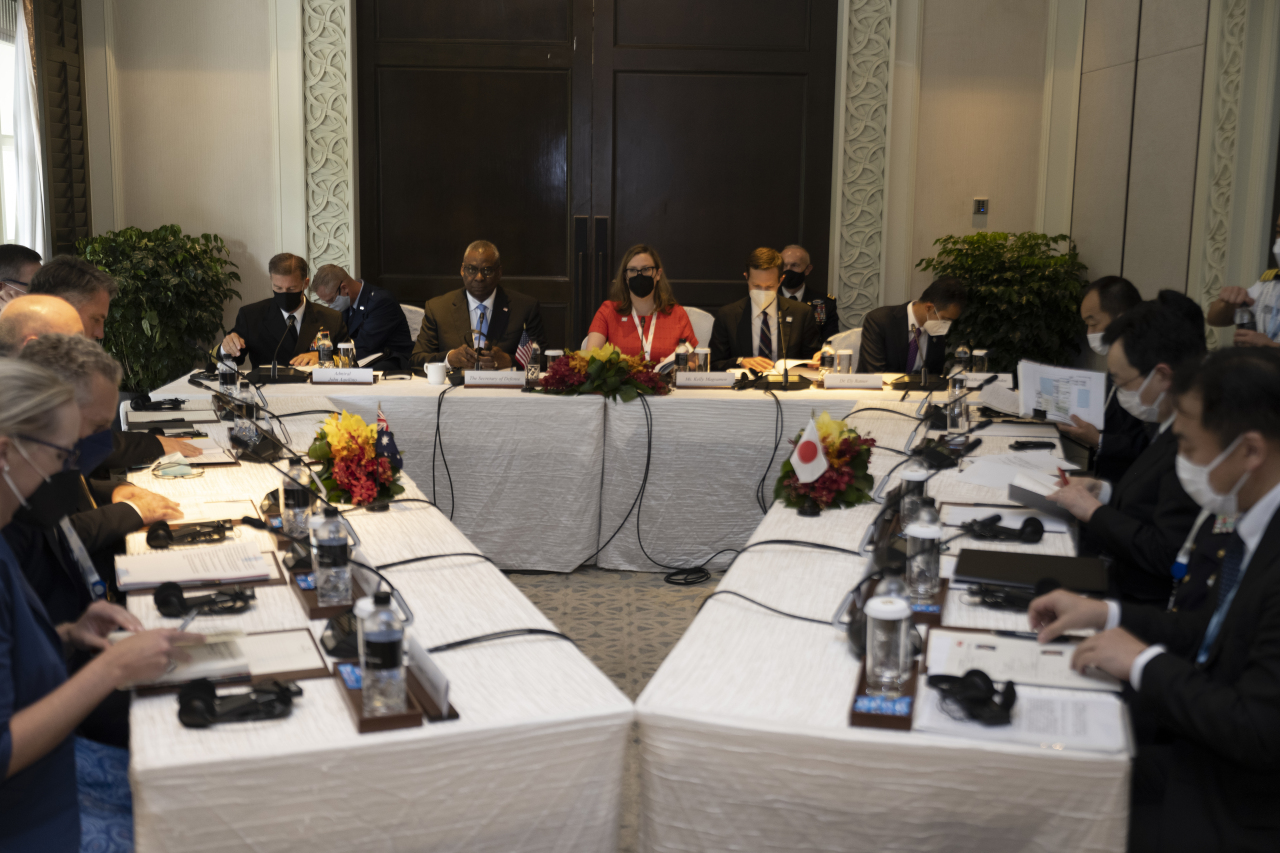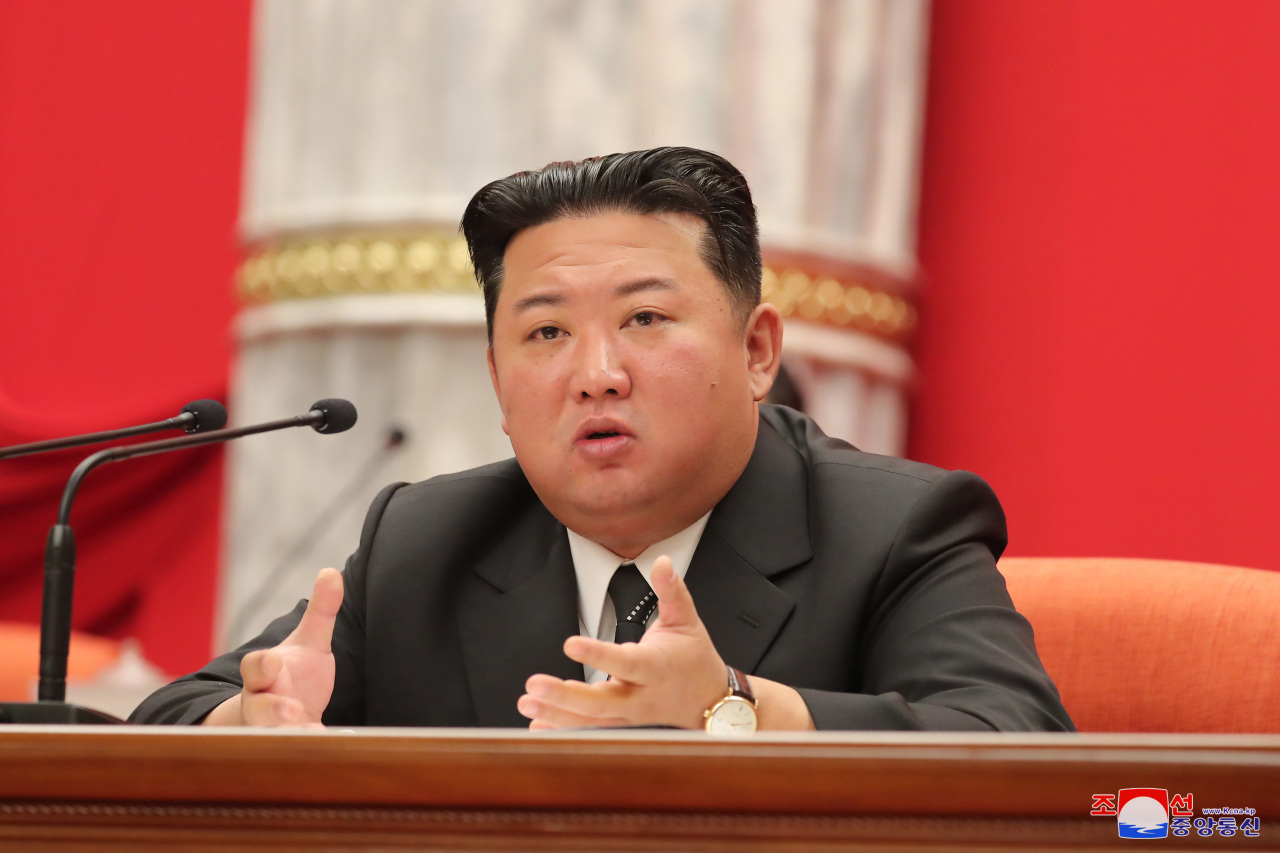US hasn’t finalized adjustments to military posture against N. Korean threats: Pentagon
N. Korea’s nuclear spending reaches $640 million in 2021, report says
By Ji Da-gyumPublished : June 15, 2022 - 15:52

“I think the final decisions have not been made,” Colin Kahl, the US undersecretary of defense for policy, said at an event hosted by the Washington-based Center of a New American Security when asked to elaborate on the top US diplomat’s comments on the matter.
US Secretary of State Antony Blinken on Monday said the US is “preparing for all contingencies” on the Korean Peninsula in very close coordination with South Korea, Japan and other allies and partners.
Blinken said the US is prepared to make both “short- and long-term adjustments” to the US military posture as appropriate during a joint conference following his bilateral meeting with South Korean Foreign Minister Park Jin in Washington.
Questions remain on how the US can step up its military readiness against North Korea’s escalating missile and nuclear threats despite the repeated rhetoric and warnings from senior US officials.
But the Pentagon policy chief suggested the US is still devising countermeasures in response to North Korea’s potential seventh nuclear test and other contingency scenarios, underscoring the salience of its coordination with the key Asian allies in view of North Korea’s record-breaking flurry of missile launches.
“Everything that we do as it relates to our responses but also any adjustments we may make in our posture will, in the first instance, be done in close consultation with the ROK and with Japan,” he said, referring to South Korea by its official name, Republic of Korea.
Kahl additionally explained that the Biden administration and the newly inaugurated Yoon Suk-yeol government will continue to discuss what the steady state of their readiness activities needs to look like going forward.
“It has been the most active period of missile launches since 2017. It’s obviously very concerning to us. It’s very concerning to South Korea, and to Japan and others in the region,” Kahl said.
“Clearly, nothing North Korea is doing is driving a wedge between us and our closest allies. In Asia, it’s having the exact opposite effect of driving us and the South Koreans and the Japanese more closely together.”
Nuclear weapons against US adversaries
Speaking at the event, Kahl also said that the “silence of nuclear weapons remains significant” when asked about the Biden administration’s nuclear policy amid growing nuclear threats posed by its adversaries -- China, Russia, North Korea and Iran.
“So nuclear weapons continue to play a very important role in our national security strategy, our national defense strategy,” Kahl said.
The Biden administration has decided not to adopt a policy not to use nuclear weapons first, according to the fact sheet of its currently classified Nuclear Posture Review released in March. The no-first-use nuclear policy essentially rules out the option of a first nuclear strike on the table.
But Kahl underscored that the Biden administration wants the threshold for nuclear use to be “as high as possible,” elucidating that nuclear weapons will serve as the “ultimate backdrop” to fight for US national survival and defend its allies.
“The fundamental role of those nuclear weapons is to deter other countries from using nuclear weapons, and that remains the fundamental purpose of nuclear weapons.”

The International Campaign to Abolish Nuclear Weapons, or ICAN, on Tuesday also said the “nine nuclear-armed states” spent more funding on developing and producing nuclear weapons last year despite the COVID-19 pandemic in its report, “Squandered: 2021 Global Nuclear Weapons Spending.”
The nuclear-weapon states refer to the United States, China, Russia, the United Kingdom, France, India, Israel, Pakistan and North Korea.
The total spending on nuclear weapons surged to $82.4 billion in 2021, which is an inflation-adjusted increase of $6.5 billion from the previous year. The nine countries spent $156,841 per minute on nuclear weapons.
North Korea ranked lowest among the nine countries in terms of annual spending on nuclear weapons and was estimated to have spent over $640 million in 2021, the Nobel Peace Prize-winning group said in the report.
But there is no official data on North Korean nuclear spending and its overall military spending. The Geneva-based organization said its estimation is based on the assumption that North Korea has continued to allocate 35 percent of gross national income to its defense budget and spent around 6 percent of its defense budget on nuclear program.
The ICAN report gauged North Korea’s spending on nuclear weapons based on the country’s GNI for 2020 as estimated by the Bank of Korea. The BOK has not yet released North Korea’s economic indicators for 2021.
Given that the BOK placed North Korea’s GNI for 2020 at around 35 trillion North Korean won ($38.9 billion), ICAN calculated that North Korea would have spent about 734 billion North Korean won on its nuclear program in 2020.
The report said, “734 billion North Korean won is $642 million, which is our estimate for 2021 North Korean nuclear spending,” adding, “This means North Korea spent $1,221 every minute on nuclear weapons in 2021.”
The Stockholm International Peace Research Institute also estimated that North Korea has assembled up to 20 warheads and probably possessed sufficient fissile material to produce 44 to 55 nuclear devices as of January this year.
But the institute said North Korea has not yet deployed any nuclear warheads in its annual report, “Armaments, Disarmament and International Security,” released this week.
The nine nuclear-armed countries possessed around 12,705 nuclear weapons, of which 9,440 were believed to be in usable military stockpiles.
SIPRI said an estimated 3,732 warheads were deployed with operational forces such as missiles and aircraft and around 2,000 were kept in a state of high operational alert.
(dagyumji@heraldcorp.com)








![[Kim Seong-kon] Democracy and the future of South Korea](http://res.heraldm.com/phpwas/restmb_idxmake.php?idx=644&simg=/content/image/2024/04/16/20240416050802_0.jpg&u=)








![[KH Explains] Hyundai's full hybrid edge to pay off amid slow transition to pure EVs](http://res.heraldm.com/phpwas/restmb_idxmake.php?idx=652&simg=/content/image/2024/04/18/20240418050645_0.jpg&u=20240418181020)

![[Today’s K-pop] Zico drops snippet of collaboration with Jennie](http://res.heraldm.com/phpwas/restmb_idxmake.php?idx=642&simg=/content/image/2024/04/18/20240418050702_0.jpg&u=)